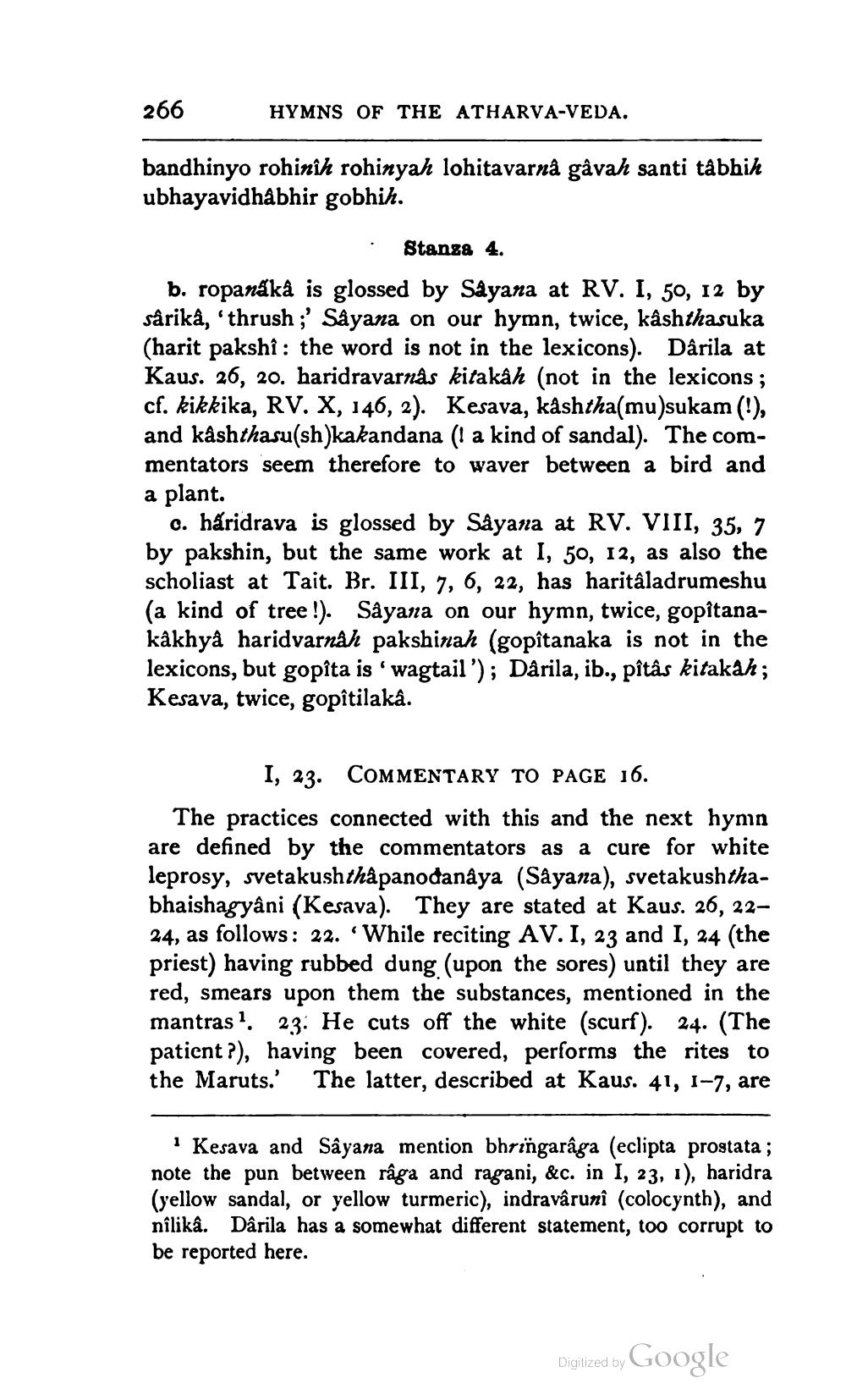________________
266
HYMNS OF THE ATHARVA-VEDA.
bandhinyo rohinîh rohinyah lohitavarnâ gâvah santi tâbhik ubhayavidhâbhir gobhih.
Stanza 4.
b. ropanákâ is glossed by Sâyana at RV. I, 50, 12 by sârikâ, 'thrush ;' Sâyana on our hymn, twice, kâshthasuka (harit pakshî: the word is not in the lexicons). Dârila at Kaus. 26, 20. haridravarnâs kitakâh (not in the lexicons; cf. kikkika, RV. X, 146, 2). Kesava, kâshtha(mu)sukam (!), and kâshthasu(sh)kakandana (! a kind of sandal). The commentators seem therefore to waver between a bird and a plant.
c. haridrava glossed by Sâyana at RV. VIII, 35, 7 by pakshin, but the same work at I, 50, 12, as also the scholiast at Tait. Br. III, 7, 6, 22, has haritâladrumeshu (a kind of tree!). Sâyana on our hymn, twice, gopîtanakâkhya haridvarnah pakshinah (gopîtanaka is not in the lexicons, but gopîta is 'wagtail'); Dârila, ib., pîtâs kitakâh; Kesava, twice, gopîtilakâ.
I, 23. COMMENTARY TO PAGE 16.
The practices connected with this and the next hymn are defined by the commentators as a cure for white leprosy, svetakushthâpanođanâya (Sâyana), svetakushthabhaishagyâni (Kesava). They are stated at Kaus. 26, 22– 24, as follows: 22. 'While reciting AV. I, 23 and I, 24 (the priest) having rubbed dung (upon the sores) until they are red, smears upon them the substances, mentioned in the mantras 1. 23. He cuts off the white (scurf). 24. (The patient?), having been covered, performs the rites to the Maruts.' The latter, described at Kaus. 41, 1-7, are
1 Kesava and Sâyana mention bhringarâga (eclipta prostata; note the pun between râga and ragani, &c. in I, 23, 1), haridra (yellow sandal, or yellow turmeric), indravârunî (colocynth), and nîlikâ. Dârila has a somewhat different statement, too corrupt to be reported here.
Digitized by
Google




